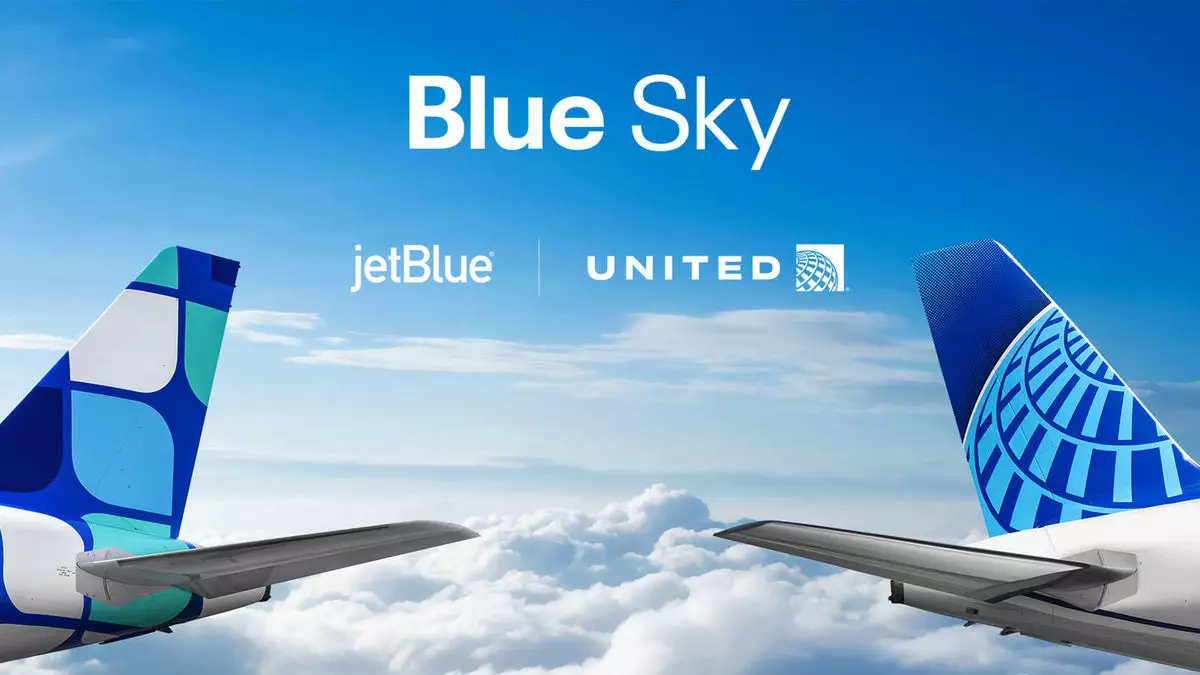Airline partnerships are becoming increasingly common in a competitive industry where customer loyalty and operational efficiencies can make or break success. Recently, United Airlines and JetBlue Airways announced a new partnership that promises to leverage both airlines’ strengths while creating new opportunities for their respective loyalty program members. While this collaboration undoubtedly carries promises of better options for travelers, it also raises questions about the competitive dynamics in the Northeast corridor, particularly in New York, one of the United States’ most scrutinized aviation markets.
A New Era of Loyalty Programs
At the heart of this partnership—dubbed the “Blue Sky” initiative—lies a symbiotic relationship centered on loyalty programs. Members of United’s MileagePlus and JetBlue’s TrueBlue can now earn and redeem points across both platforms. This signifies a monumental shift in how these airlines intend to woo frequent flyers, making it possible for travelers to book flights on either airline while accumulating loyalty benefits. Early boarding, upgrades, and other perks will be available to members across the two platforms, potentially amplifying the value proposition for loyal customers of both airlines.
However, the execution of this strategic initiative is where the nuances of the partnership become apparent. While the airlines will not engage in codesharing—meaning they will still operate under separate flight numbers—this could be an indication of a careful alignment of interests without overly saturating the market with competition. It demonstrates an understanding of regulatory constraints that have hampered previous airline alliances. The successful navigation of these sensitive regulatory waters shows the airlines’ awareness of industry scrutiny while attempting to bolster their market position.
Impact on the Competitive Landscape
While some analysts view this partnership favorably for United, arguing it strengthens their foothold in a key market, others raise concerns about consumer choice in the New York area. Airlines analysts like Gary Leff describe this deal as a “win” for United, allowing it to amplify its offerings and solidify its dominance. After all, United was already the largest airline in the New York metroplex in terms of seats flown, and adding JetBlue to its offerings provides more options without significantly increasing competition against it.
This aspect is particularly troubling for consumers and advocates for competitively priced air travel. With a reduction in JetBlue’s latitude for collaborating with other major carriers (notably American Airlines), the net effect could lead to reduced competition, especially in an airline market nearing oligopoly status. Leff has pointed out that JetBlue had the opportunity to create a robust competitor against United and Delta through its previously held Northeast Alliance with American, a collaboration that provided consumers with diverse choices. The dismantling of such arrangements by U.S. antitrust regulators leaves much to be desired in terms of competition.
Mutual Gains Amid Potential Drawbacks
Despite the concerns for consumer choice, the partnership does present benefits for both parties. JetBlue stands to improve its operational outreach by gaining more access at Newark, facilitating its strategic expansion. For United, re-entry into JFK—where it last operated in 2015—represents not only a geographical gain but also a psychological milestone in reclaiming a prominent position within the competitive air travel landscape.
Moreover, understanding the greater implications of this partnership reveals a situation that benefits travelers drastically. JetBlue members will gain access to United’s extensive international network, including over 200 destinations that JetBlue does not serve. For the traveler who desires a broader choice, this partnership could deliver on its promises effectively. Additionally, loyalty members on the MileagePlus side can now take advantage of JetBlue’s strong Northeast-Caribbean network—opening new routes and opportunities that previously would have required separate bookings, thereby enhancing consumer convenience.
Looking Ahead: Challenges and Opportunities
However, as the dust settles on this newly formed alliance, the adjustments within the airline industry landscape will be multifaceted. Industry analysts like Brett Snyder point out that competition dynamics will become increasingly nuanced; while JetBlue may find new advantages against American, Delta remains a heavyweight juggernaut with little to fear from this alliance. With Delta already dominating JFK and LaGuardia, the question arises: can United and JetBlue even tip the balance of power in the region?
As we observe how this partnership unfolds, it will be crucial to keep a vigilant eye on both price structures and service availability. While travelers may initially celebrate expanded options, the longer-term implications may shape how airlines structure essential services. The Blue Sky partnership embodies hope for enhanced customer experiences through collaboration, but it equally raises the specter of diminished competition in an already-consolidated market. Only time will tell how this partnership will reshape the complexities of modern air travel and consumer choice in the bustling corridors of the Northeast.


Leave a Reply